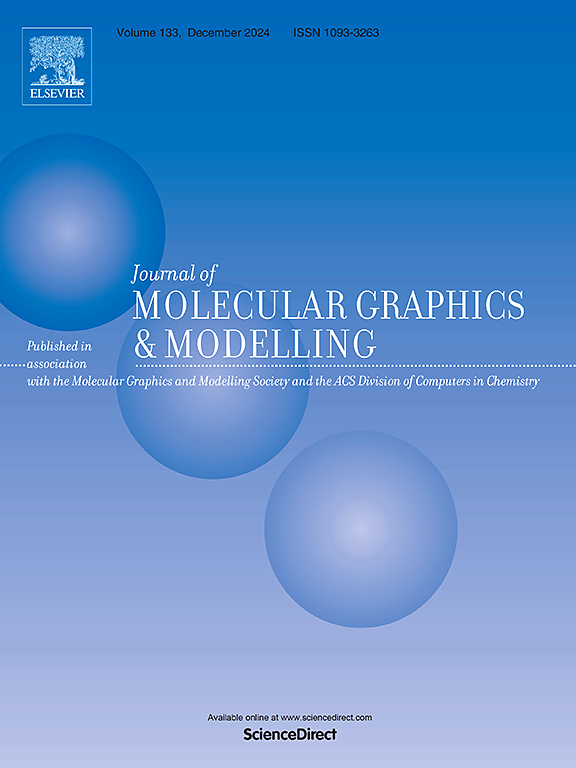DFT and machine learning integration to predict efficiency of modified metal-free dyes in DSSCs
IF 2.7
4区 生物学
Q2 BIOCHEMICAL RESEARCH METHODS
引用次数: 0
Abstract
Power conversion efficiency (PCE) prediction in dye-sensitized solar cells (DSSCs) increasingly relies on computation and machine learning, lowering experimental demands and accelerating materials discovery. In this work we incorporated quantum-chemical descriptors, computed via density-functional theory (DFT), with cheminformatic descriptors generated using the Mordred library to train two machine learning models. The Random Forest and XGBoost models were trained on a dataset of 40 dyes, together with their literature experimental PCEs. The model stabilities were investigated using multiple random state configurations (30, 38, 42 and 50). The trained models were used to evaluate newly engineered dyes, and then validated through electronic structure analysis. The novel dyes are derivatives of: (E)-10-methyl-9-(3-(10-methylacridin-9(10H)-ylidene)prop-1-en-1-yl)acridin-10-ium (C-PE3), 10-methyl-9-((1E,3E)-5-(10-methylacridin-9(10H)-ylidene)penta-1,3-dien-1-yl)acridin-10-ium (C-PE5) and 10-methyl-9-((1E,3E,5E)-7-(10-methylacridin-9(10H)-ylidene)hepta-1,3,5-trien-1-yl)acridin-10-ium (C-PE7). A R2 = 0.8904 and RMSE = 0.0038 for XGBoost as performer under the random state of 38 were achieved. Both models, XGBoost and RF identified C3-PE5 and C3-PE7 as top promising candidates, with predicted PCEs of 5.49 % and 5.43 %, respectively. By integrating DFT/cheminformatics and machine learning techniques, this study enabled PCE prediction with no need for experimental input.

求助全文
约1分钟内获得全文
求助全文
来源期刊

Journal of molecular graphics & modelling
生物-计算机:跨学科应用
CiteScore
5.50
自引率
6.90%
发文量
216
审稿时长
35 days
期刊介绍:
The Journal of Molecular Graphics and Modelling is devoted to the publication of papers on the uses of computers in theoretical investigations of molecular structure, function, interaction, and design. The scope of the journal includes all aspects of molecular modeling and computational chemistry, including, for instance, the study of molecular shape and properties, molecular simulations, protein and polymer engineering, drug design, materials design, structure-activity and structure-property relationships, database mining, and compound library design.
As a primary research journal, JMGM seeks to bring new knowledge to the attention of our readers. As such, submissions to the journal need to not only report results, but must draw conclusions and explore implications of the work presented. Authors are strongly encouraged to bear this in mind when preparing manuscripts. Routine applications of standard modelling approaches, providing only very limited new scientific insight, will not meet our criteria for publication. Reproducibility of reported calculations is an important issue. Wherever possible, we urge authors to enhance their papers with Supplementary Data, for example, in QSAR studies machine-readable versions of molecular datasets or in the development of new force-field parameters versions of the topology and force field parameter files. Routine applications of existing methods that do not lead to genuinely new insight will not be considered.
 求助内容:
求助内容: 应助结果提醒方式:
应助结果提醒方式:


